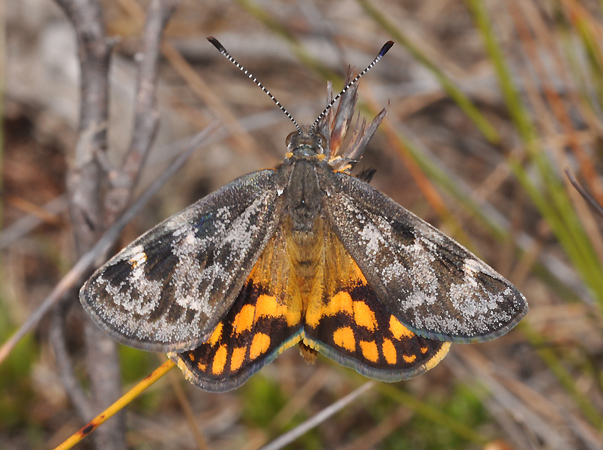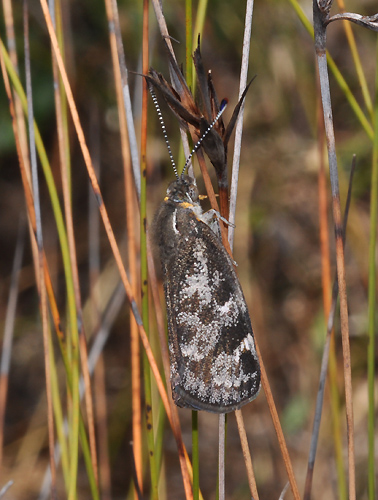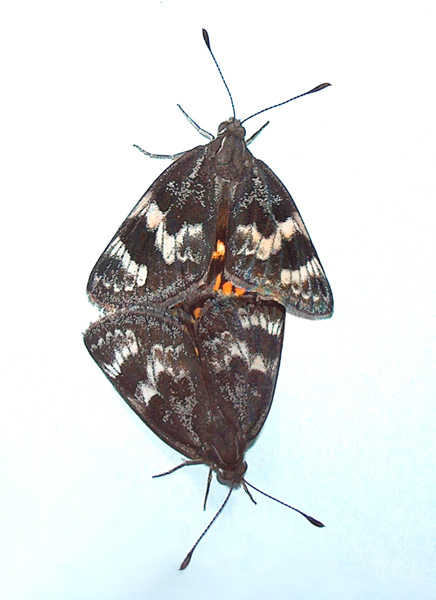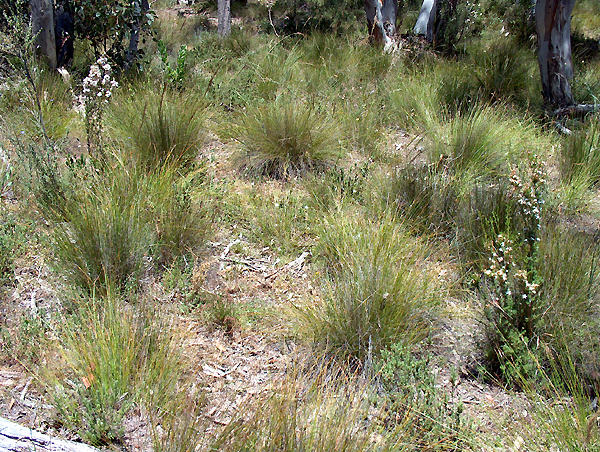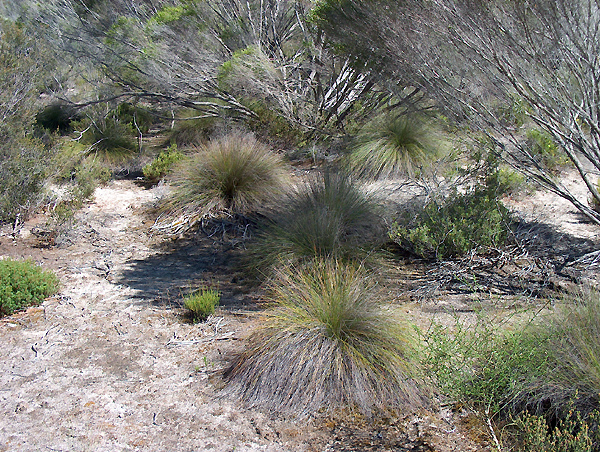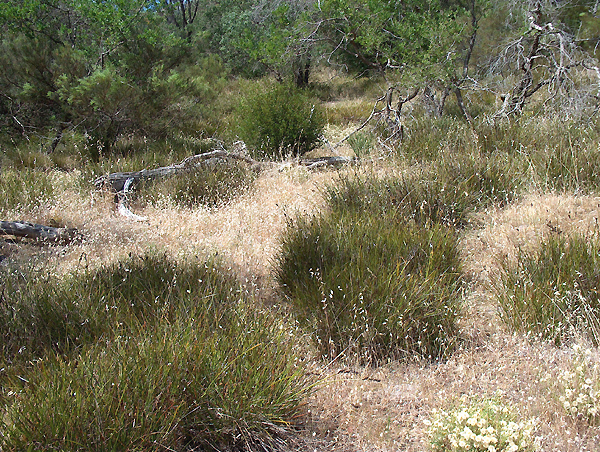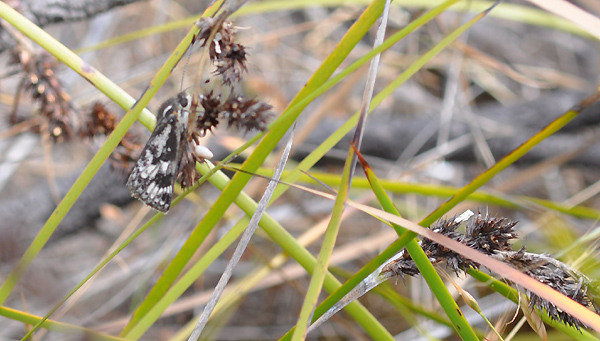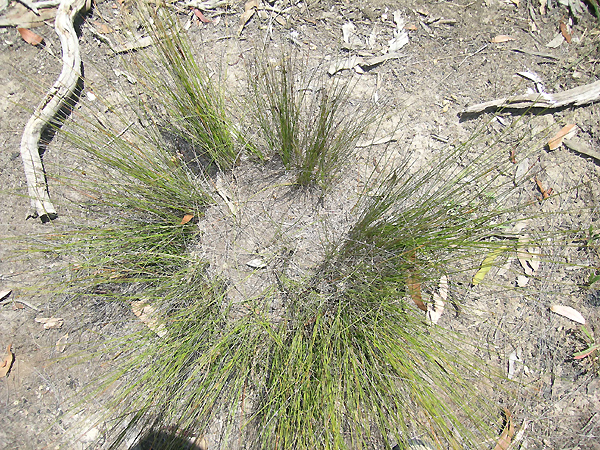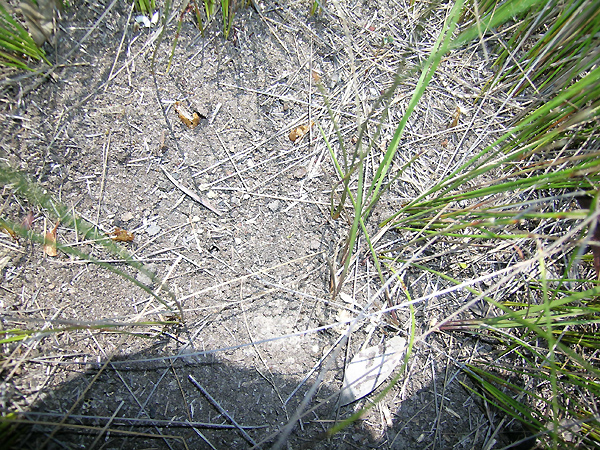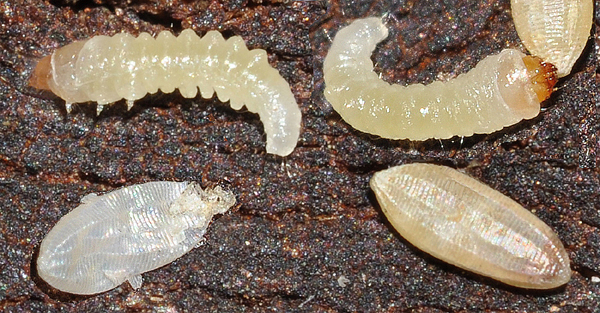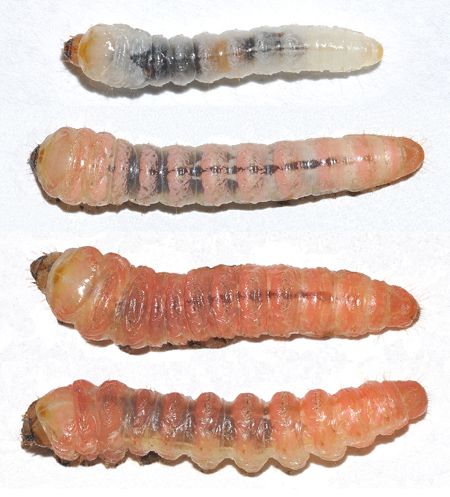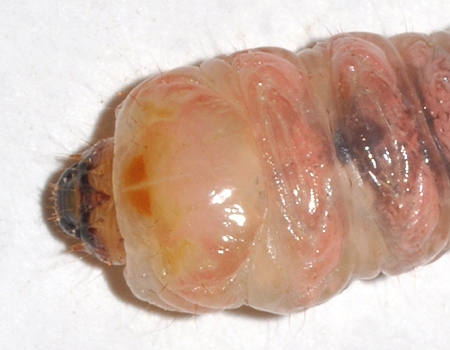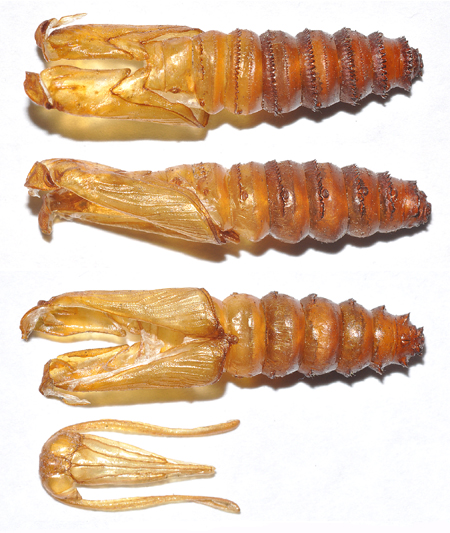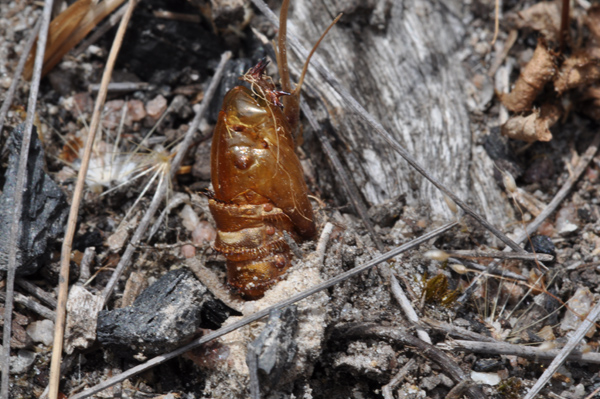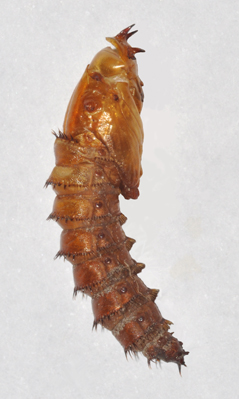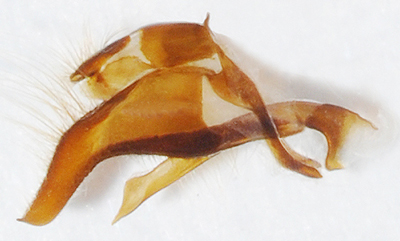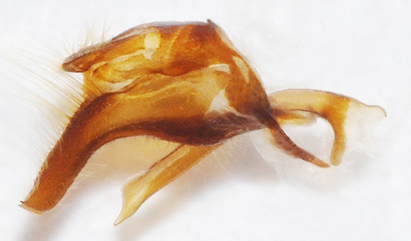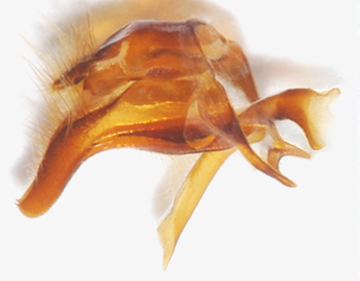Top larva is immature 12 mm, late 2nd instar
Other larvae are mature 5th instar 30 mm;
the pink larva (upper one) is 2 years old;
the orange-red larva (bottom two) is 3 years old
that has remained dormant in the soil for a year.
Male exuvia (empty pupa/chrysalis) 23 mm (on left);
on right is empty silk cocoon 7 cm, with the exuvia protruding from its end.
Latter cocoon is normally constructed upright in the ground with
the top of the sealed cocoon at ground level.
Not all larvae living underground in the Synemon parthenoides habitat
are friendly; they can include the larva of the giant robber fly (Asilinae) (exuviae shown above),
which was near to the Synemon parthenoides parthenoides exuviae.
The whole part of this insect implies death, with a very spiny pupa/exuvia (30 mm) and a very
imposing, very large flying adult as a likely formidible predator of the sun-moths.
A skewed side view of male genitalia for Synemon parthenoides parthenoides
from the Southeast Region, showing the unusual cross-brace (lower right)
separating the vertical vinculum arms and a bifurcate saccus, typical for
Synemon.
